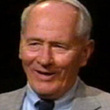The Path Between the Seas
(Libby/OverDrive eAudiobook)
Available Platforms
Description
More Details
Excerpt
Published Reviews
Library Journal Review
First, a glorious vision of what might be animates worldwide imaginations: a canal to bisect the New World whereby commerce in vast quantities would pass more cheaply than anyone had heretofore dreamed. France in particular had the vision and the man for the job: Ferdinand de Lesseps, who had led the construction of the Suez Canal. A long back and forth about the new canal's route several times almost gave the nod to Honduras. Then, what type of canal should it be, sea level or lock based? Meanwhile, the Isthmus of Panama festered-a malarial swamp interspersed with high mountains, awash in bubbling mud, sick with yellow fever. Pulitzer Prize winner McCullough gathers all these threads and adds the human drama: engineers who underestimated the challenge; their families, many of whom died from the yellow fever; and black workers from the Caribbean who were better paid than they could have been elsewhere. The engineering was spectacular; the locks still function flawlessly today. McCullough's careful research and genius for narrative come brilliantly through; distinguished actor Edward Herrmann adds just the proper gravitas and warmth. The very fine combination should be welcome in history collections in any type of library.-Don Wismer, Cary Memorial Lib., Wayne, ME (c) Copyright 2010. Library Journals LLC, a wholly owned subsidiary of Media Source, Inc. No redistribution permitted.
Kirkus Book Review
A first-rate drama of-mobilization and diplomacy ""not unlike that of war."" When fifteen years of struggle by Suez veteran Ferdinand de Lesseps to build a canal through the Panamanian isthmus collapsed through tropical disease, logistical barriers, and financial disgrace, two Americans managed literally superlative accomplishments: moving billions of cubic yards of dirt, harnessing one of the world's most savage rivers, developing an unprecedented lock and electrical system--and, not least, defeating the Anopheles mosquito. In an open, vigorous style, the author of The Johnstown Flood (1968) and The Brooklyn Bridge (1972) contrasts the manic-depressive attitudes of French and American populations and leaders toward the canal with the cool perseverance of his two heroes: the engineer John Stevens, a former common laborer who took charge of the collapsing canal project and realized that the problem was not digging but transportation; and Dr. William Gorges, who conquered malaria and yellow fever in a region where hospital rooms used to literally shake from patients' chills. Ironically, it was the often jingoistic ""Manifest Destiny"" rhetoric and the medical experience of the brutal Spanish-American War that provided Congressional backing and scientific leads for the Panama task. A further twist was the origin of the Panamanian republic which permitted the canal to go through: French adventurer Phillippe Bunau-Varilla executed a coup against Colombia in 1903 for ""the greater glory of France,"" then, according to McCullough, promptly put the new nation and its treasury under the wardship of the US State Department and the House of Morgan respectively. Meanwhile, viewing the French example, Congress so feared possible graft in Panama that it threw horrific red tape around the canal project. But Stevens was able to recruit the greatest engineering minds of the period--and the book is able to recapture their breakthroughs. Copyright ©Kirkus Reviews, used with permission.
Library Journal Reviews
First, a glorious vision of what might be animates worldwide imaginations: a canal to bisect the New World whereby commerce in vast quantities would pass more cheaply than anyone had heretofore dreamed. France in particular had the vision and the man for the job: Ferdinand de Lesseps, who had led the construction of the Suez Canal. A long back and forth about the new canal's route several times almost gave the nod to Honduras. Then, what type of canal should it be, sea level or lock based? Meanwhile, the Isthmus of Panama festered-a malarial swamp interspersed with high mountains, awash in bubbling mud, sick with yellow fever. Pulitzer Prize winner McCullough gathers all these threads and adds the human drama: engineers who underestimated the challenge; their families, many of whom died from the yellow fever; and black workers from the Caribbean who were better paid than they could have been elsewhere. The engineering was spectacular; the locks still function flawlessly today. McCullough's careful research and genius for narrative come brilliantly through; distinguished actor Edward Herrmann adds just the proper gravitas and warmth. The very fine combination should be welcome in history collections in any type of library.-Don Wismer, Cary Memorial Lib., Wayne, ME Copyright 2004 Reed Business Information.
Reviews from GoodReads
Citations
McCullough, D., & Runger, N. (2011). The Path Between the Seas (Unabridged). Simon & Schuster Audio.
Chicago / Turabian - Author Date Citation, 17th Edition (style guide)McCullough, David and Nelson Runger. 2011. The Path Between the Seas. Simon & Schuster Audio.
Chicago / Turabian - Humanities (Notes and Bibliography) Citation, 17th Edition (style guide)McCullough, David and Nelson Runger. The Path Between the Seas Simon & Schuster Audio, 2011.
Harvard Citation (style guide)McCullough, D. and Runger, N. (2011). The path between the seas. Unabridged Simon & Schuster Audio.
MLA Citation, 9th Edition (style guide)McCullough, David, and Nelson Runger. The Path Between the Seas Unabridged, Simon & Schuster Audio, 2011.
Copy Details
| Collection | Owned | Available | Number of Holds |
|---|---|---|---|
| Libby | 3 | 0 | 4 |





































